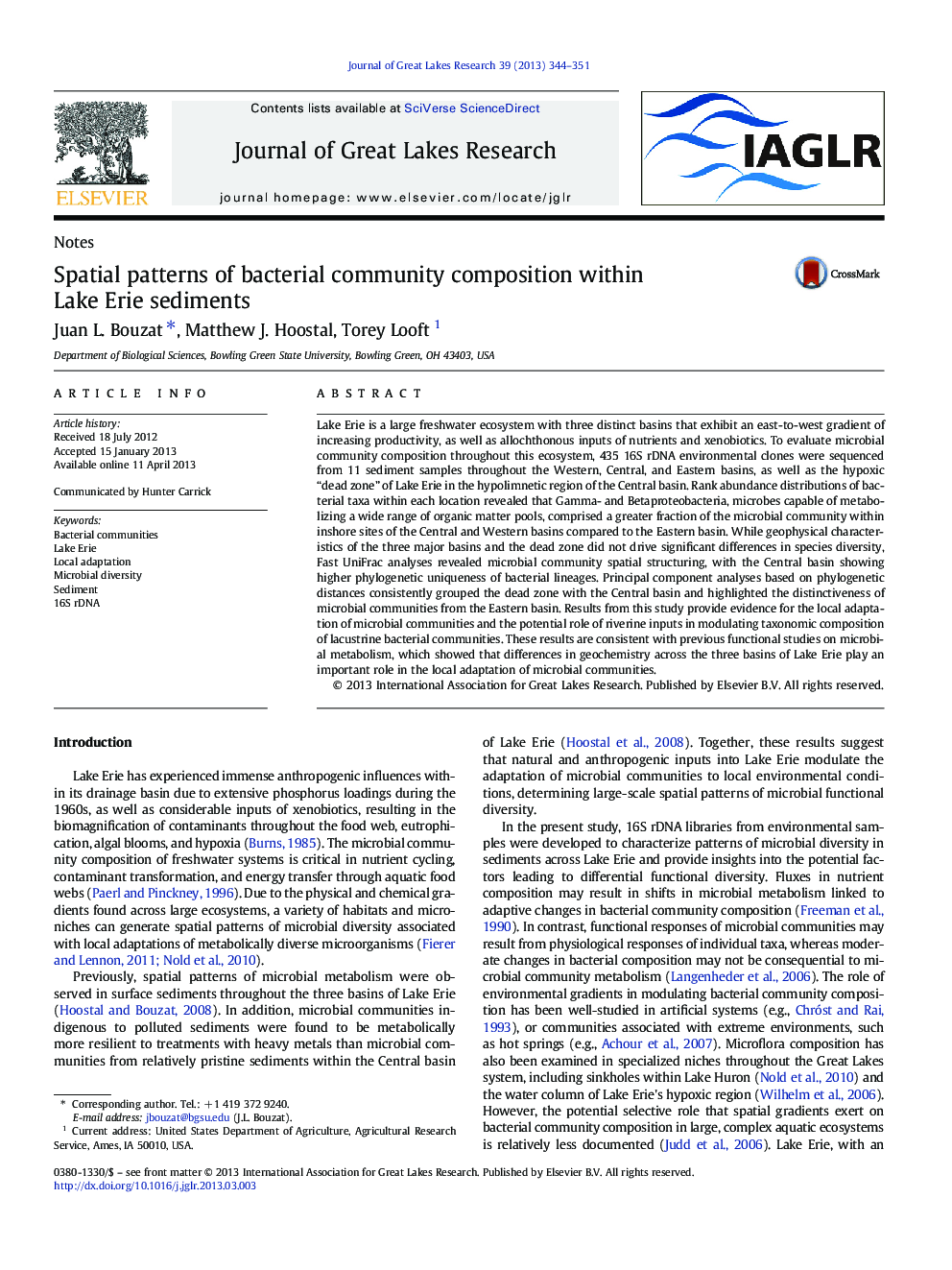| کد مقاله | کد نشریه | سال انتشار | مقاله انگلیسی | نسخه تمام متن |
|---|---|---|---|---|
| 4398635 | 1306698 | 2013 | 8 صفحه PDF | دانلود رایگان |

• Environmental clones from Lake Erie revealed significant bacterial diversity.
• Geochemical nutrient cycles were inferred from bacteria taxa composition.
• Spatial structuring of communities was driven by lake's basins and hypoxic zone.
• Taxa spatial patterns were consistent with prior analyses of functional diversity.
• Results are consistent with the local adaptation of microbial communities.
Lake Erie is a large freshwater ecosystem with three distinct basins that exhibit an east-to-west gradient of increasing productivity, as well as allochthonous inputs of nutrients and xenobiotics. To evaluate microbial community composition throughout this ecosystem, 435 16S rDNA environmental clones were sequenced from 11 sediment samples throughout the Western, Central, and Eastern basins, as well as the hypoxic “dead zone” of Lake Erie in the hypolimnetic region of the Central basin. Rank abundance distributions of bacterial taxa within each location revealed that Gamma- and Betaproteobacteria, microbes capable of metabolizing a wide range of organic matter pools, comprised a greater fraction of the microbial community within inshore sites of the Central and Western basins compared to the Eastern basin. While geophysical characteristics of the three major basins and the dead zone did not drive significant differences in species diversity, Fast UniFrac analyses revealed microbial community spatial structuring, with the Central basin showing higher phylogenetic uniqueness of bacterial lineages. Principal component analyses based on phylogenetic distances consistently grouped the dead zone with the Central basin and highlighted the distinctiveness of microbial communities from the Eastern basin. Results from this study provide evidence for the local adaptation of microbial communities and the potential role of riverine inputs in modulating taxonomic composition of lacustrine bacterial communities. These results are consistent with previous functional studies on microbial metabolism, which showed that differences in geochemistry across the three basins of Lake Erie play an important role in the local adaptation of microbial communities.
Journal: Journal of Great Lakes Research - Volume 39, Issue 2, June 2013, Pages 344–351